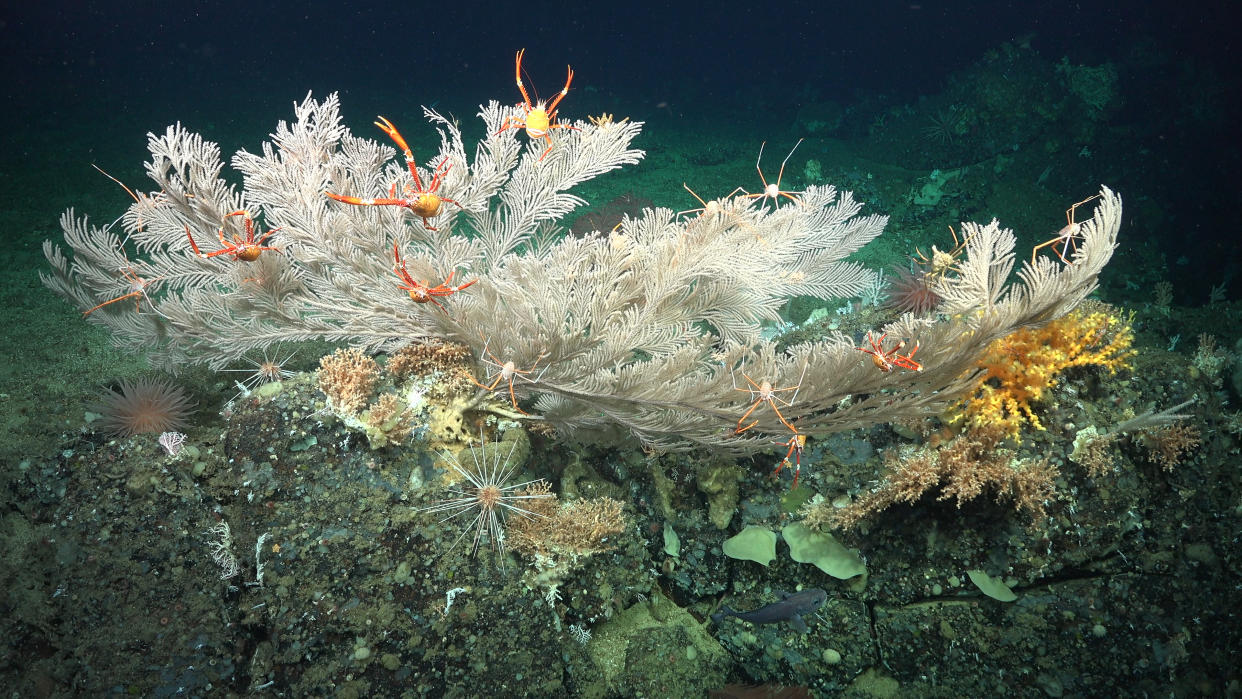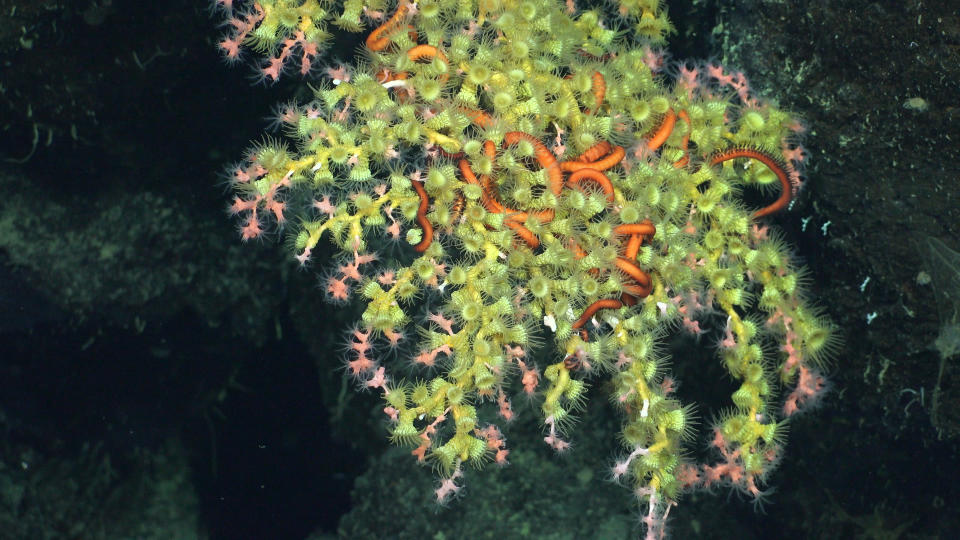Pristine coral reefs discovered near Galápagos Islands are thousands of years old and teeming with life

Ocean explorers have discovered two pristine, deep-sea coral reefs near the Galápagos Islands and put two uncharted seamounts off the coast of Ecuador on the map.
The larger of the two cold-water reefs is over 2,600 feet (800 meters) long, according to a statement. Both reefs sit 1,000 feet (300 m) beneath the ocean surface in the Galápagos Marine Reserve and boast a rich diversity of stony coral species that have thrived there for thousands of years.
"The Galápagos Marine Reserve is an area of outstanding biological significance," Stuart Banks, a senior marine scientist at the non-profit Charles Darwin Foundation, said in the statement. "Finding such deep and long-lived reefs takes us important steps closer to protecting hidden dimensions of ocean diversity and understanding the role that deep habitats play in maintaining our ocean's health."
Related: What percentage of the ocean have we mapped?
Researchers found the coral reefs during a 30-day expedition to study underwater cliff ecosystems around the Galápagos Islands. They used a remotely operated vehicle (ROV) to capture images of colorful species supporting other forms of life, including crustaceans, anemones, brittle stars and urchins.
The expedition also confirmed the existence of two seamounts in the sea reserve, which scientists had previously detected in satellite data. The team charted the features using a laser scanner that creates extremely high-resolution maps. These maps are so detailed individual animals living on the seafloor can be picked out.
The researchers also created detailed maps of the newly discovered coral reefs, which encrust vertical rock faces spanning depths between 1,200 and 1,400 feet (370 to 420 m). These aren't the first cold-water reefs found in these waters, however: In April, scientists documented the first deep-sea coral reef found in the Galápagos archipelago on the summit of a previously unmapped seamount.

"We are thrilled our mapping data are able to improve our understanding of reef ecosystems in the Galápagos," Katleen Robert, a researcher at Memorial University of Newfoundland's Fisheries and Marine Institute in Canada who led the recent expedition, said in the statement.
RELATED STORIES
—Watch elusive, sucker-less squid in rare footage captured off the Galapagos
—Hidden underworld filled with never-before-seen creatures discovered beneath the seafloor
—'We know far more about the deep ocean than the moon or Mars,' says explorer Jon Copley
The expedition also ventured northeast of the Galápagos archipelago to protected waters off a remote volcanic island known as Cocos Island. There, the team observed more deep-sea corals covered with eggs, according to the statement.
"These fascinating new findings continue to feed important research to inform better management of existing and future marine protected areas in the region," Banks said.

